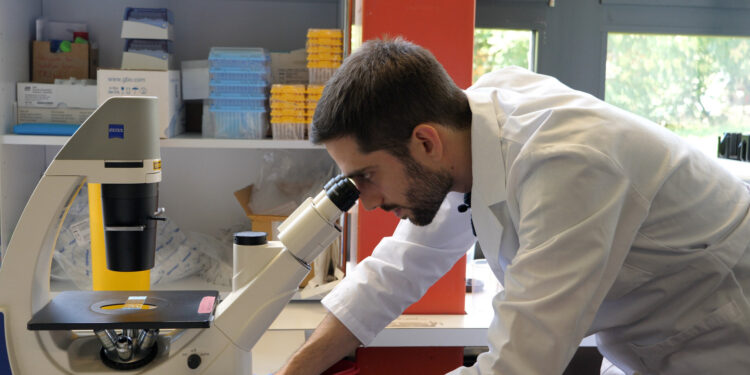“Patients with long active COVID illness also had elevated blood levels, indicating damage to various cells in the body.” Credit: Enrique Heer
Most people infected with the SARS-CoV-2 virus recover after an acute illness. However, a significant proportion of infected people develop long-lasting symptoms with a wide range of manifestations. The causes and mechanisms of Long COVID disease are still unknown, and there are no diagnostic tests or targeted treatments.
A team of researchers led by Onur Boyman, professor of immunology at the University of Zurich (UZH) and director of the Department of Immunology at the University Hospital Zurich (USZ), showed in a study that the complement system plays an important role in long COVID.
It is part of the innate immune system and normally helps fight infections and eliminate damaged and infected body cells. “In patients with long COVID, the complement system no longer returns to its basal state, but remains activated and thus also damages healthy cells in the body,” explains Boyman.
Continued activation of the complement system damages tissues and blood cells
Researchers followed 113 COVID-19 patients for up to a year after their acute SARS-CoV-2 infection and compared them to 39 healthy controls. After six months, 40 patients had active long-COVID disease. More than 6,500 proteins present in the blood of study participants were analyzed during the acute infection and six months later.
“Analyses of proteins altered in long COVID confirmed excessive activity of the complement system. Patients with active long COVID disease also had elevated blood levels indicating damage to various cells in the body, including red blood cells , platelets and blood vessels,” explains Carlo Cervia-Hasler, a postdoctoral researcher in Boyman’s team and first author of the study.
Bioinformatics recognizes protein patterns
Measurable changes in blood proteins in active long COVID indicate an interaction between proteins of the complement system, which are involved in blood clotting and in the repair of tissue damage and inflammation. In contrast, the blood levels of long-COVID patients who recovered from the illness returned to normal within six months. Active long COVID is therefore characterized by the configuration of proteins in the blood. The blood markers were discovered using bioinformatics methods in collaboration with Karsten Borgwardt while he was a professor at ETH Zurich.
“Our work not only lays the foundation for better diagnosis, but also supports clinical research into substances that could be used to regulate the complement system. This opens new avenues for the development of more targeted therapies for patients with of long COVID,” says Onur. Boy man.
The article is published in the journal Science.
More information:
Carlo Cervia-Hasler et al, Persistent complement dysregulation with signs of thromboinflammation in active Long Covid, Science (2024). DOI: 10.1126/science.adg7942. www.science.org/doi/10.1126/science.adg7942
Provided by the University of Zurich
Quote: Study finds complement system causes cellular damage in long COVID cases (January 18, 2024) retrieved January 18, 2024 from
This document is subject to copyright. Apart from fair use for private study or research purposes, no part may be reproduced without written permission. The content is provided for information only.



